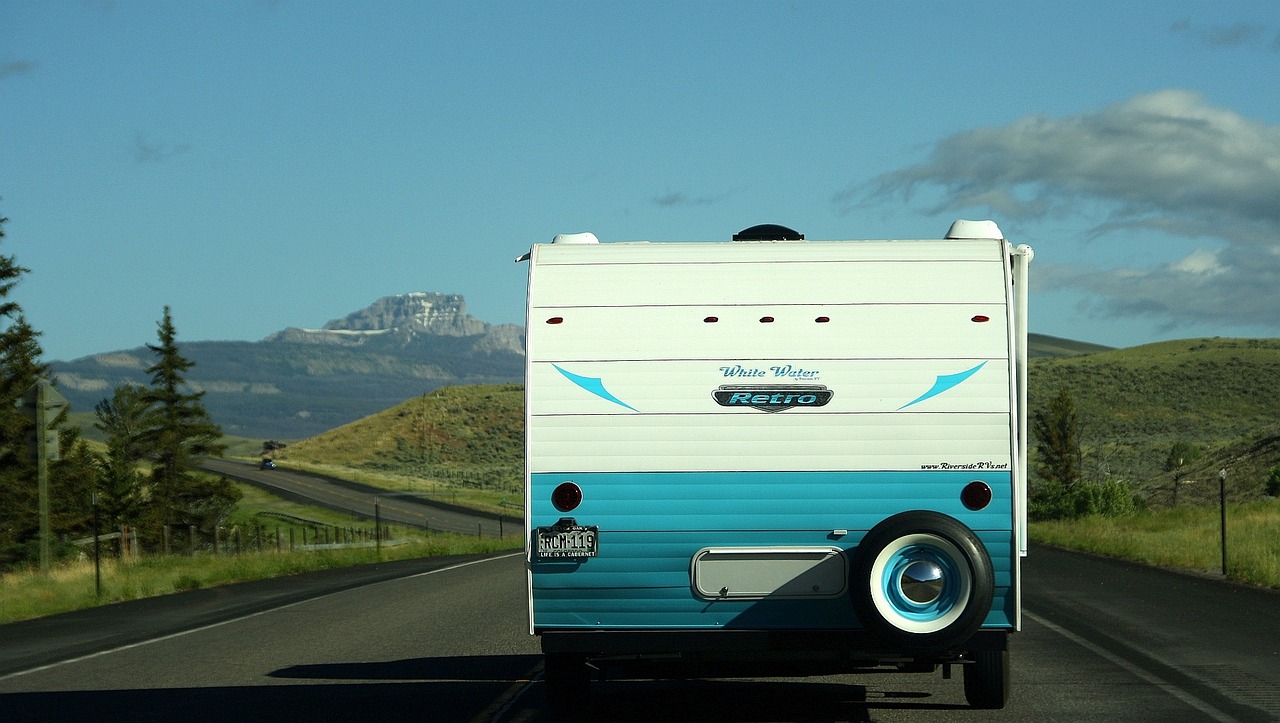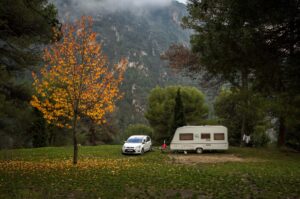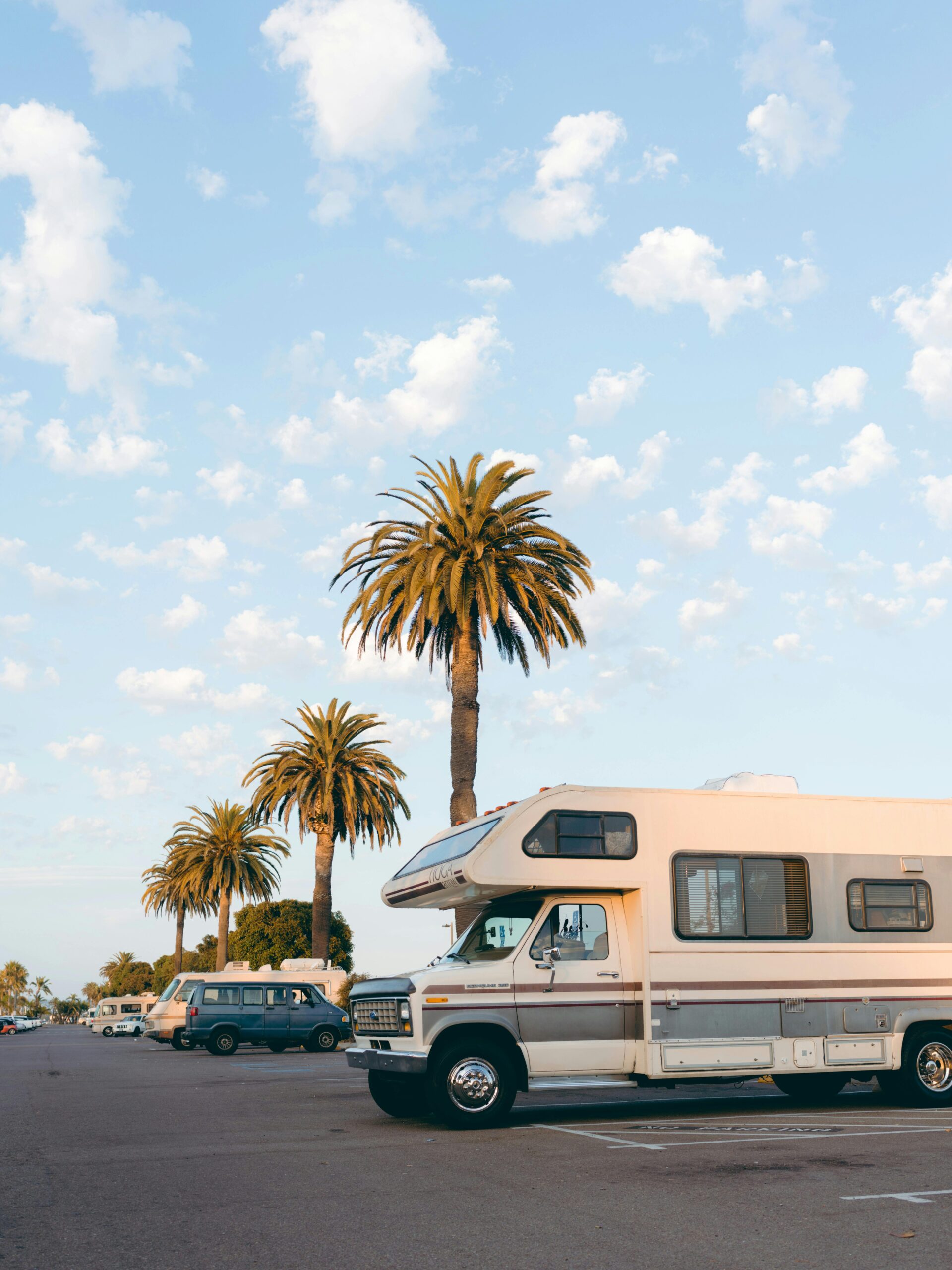When you’re looking at these, you’re usually looking at some serious money, especially if you don’t already have a truck capable of hauling a camper this size. However, if you have a truck and some remodeling skills, a fixer-upper camper can save you some bucks. These larger campers are more comfortable for living in long-term—especially if there are two or three people living in it—and they can be parked on someone’s else’s land, put in an RV park, or you can travel with them, making them a flexible housing option for a few years.
Do be aware, however, that campers—even if you leave them stationary—require more maintenance than a house. They’re prone to leaks in the various seams and around all the roof protuberances. If you are going to leave it stationary, a metal carport over it is a good investment to give your camper a longer life and save you maintenance time. But if that’s not an option, stay vigilant and seal up any leaks as soon as you see them. Any holes caused by road damage or anything else—even if it’s small hole in an exterior wall—must be sealed up immediately, before moisture/condensation gets inside. You should get on the roof not less than once a year to clean it and look for any problem spots. If you have any canvas coverings, like on a pop-up, they should be cleaned at least twice a year—more often if you are in a place where it creates mold easily. Mold will eat up the fibers of the canvas, eventually causing holes, and the fibers of the canvas will not be able to swell up and become waterproof, creating leaks.
This is a small old camper, made to be a hangout for the owner’s growing son, but he really made the outside look good and there are some great tips for sealing up roof leaks and making the outside look nice.
This Airstream-like camper was bought already-gutted. The young woman who bought it (her dad helped her fix it up) uses it as a bedroom and art studio, but there’s plenty of room in it to have reinstalled a bathroom and kitchen. While it’s not configured for living in, there are a lot of tips for redoing the subflooring and covering over old, no-longer-needed vent holes in the roof.
This 1966 camper is very small, but has been fixed up so that it’s cute, airy, and has a modern retro vibe. I like how they cut a leaf into their table and made it swivel so they can use it in a variety of ways, no matter how many people they’re trying to seat or in what configuration. Personally, I would have wanted more counter space where they put their “mudroom,” but I’ve never seen a mudroom like this in a camper and it may be something that is a lot more useful to you than a little extra surface area in the kitchen. As I have mentioned before, the thing about building out your own camper/tiny house is that you can prioritize the things that are important to you—whether that’s space to store skis, a toilet, a cook’s kitchen, a dog kennel, or anything else you can’t live without.
This 20 year old fifth-wheel was in excellent shape (I am under the impression that these folks have been its only owner), but very dated. If you’re starting with a camper that only needs a cosmetic remodel, this video has some great tips on how to paint the woodwork and take out some of the tackier aspects (like the mirrored door). Although I can answer their question as to why it had decorative padded fabric sections in the cabinets: it’s for sound-dampening. This could be important to you if you do anything that involves recording sound, like shooting videos, doing livestreams, recording music, or even just having frequent Zoom meetings. And the rain on the roof of a camper is usually very loud, so you may want to keep these little sound dampener things just so you can hear your TV in a downpour. If that’s the case, re-cover them with a knit fabric (which is easier to stretch smoothly over a curved or irregular shape) and staple it to the back, the way he did the seats.
Here is a remodeling video of a 1993 fifth wheel. My mother has a newer camper with one-piece fiberglass siding and fixing issues in it has been very different (and, honestly, impossible), compared to this type of camper with aluminum siding. This camper is build in the style of a house, so it can be fixed like a house; the same is not true of the fiberglass campers which do not have a stud walls or replaceable insulation. If you want or need to get a fixer-upper camper, I recommend an old school, aluminum-sided camper like this one. Also, be sure to look up remodeling videos on YouTube for your type of camper before you buy so you can see what it looks like under the hood, if you will, so you will know if you can do the sort of work required to fix it.
This Jayco camper is the cheapest new camper on the market; the owners paid $10,000 for it in 2022. It is very no-frills, but does come with basics like a fridge, microwave, dry bath, and heat and air. Because it is so simple on the inside, it has room for customization, like overhead storage. I’ve also known people to take one or both bunkbeds out of their camper to make a large closet or pantry or work nook. If you need to store outdoor gear or work tools, there are ways to make this area very usable for long-term living.
Need something smaller (or something that doesn’t require a truck)? Check out this post to explore all your camper options: Highway Homes: Exploring Options for Camper Living
Is a camper not the right option for your budget or current vehicle, but you want the nomad life? There are plenty of other alternatives available: On the Road Again – Exploring Nomadic Housing Options


